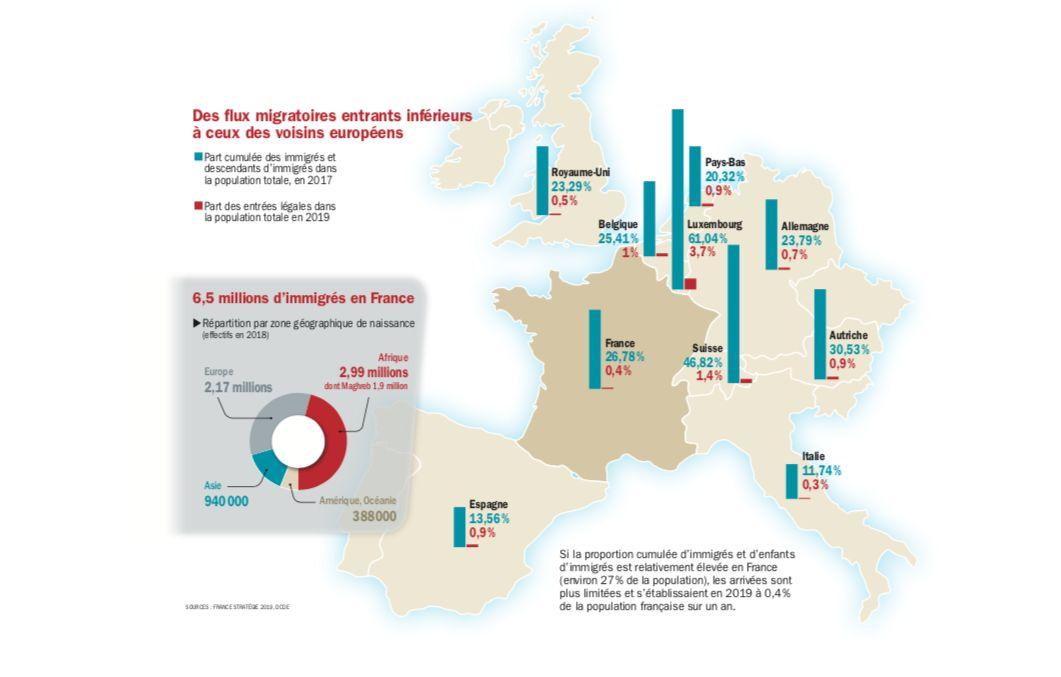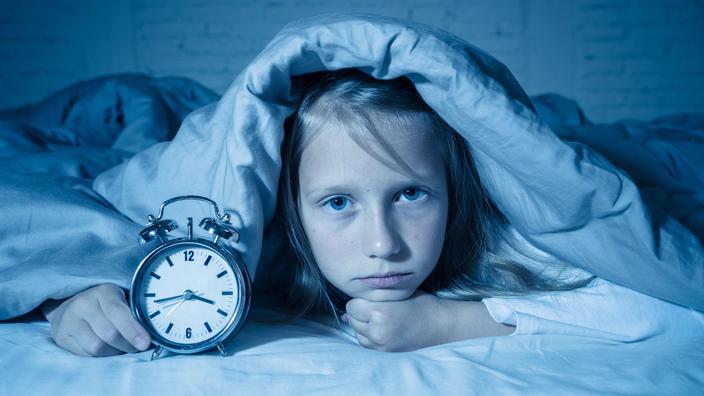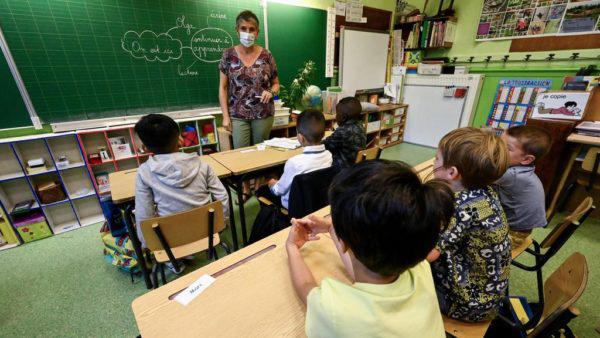
"There is in France a people who replace another in countless places, which third-backing the country with a different civilization, an Islamic civilization which does not have the same values as European civilization."Since entering the campaign, the polemicist Eric Zemmour has multiplied references to the great replacement, a sulphurous theory, popularized in the mid -2010s by the far -right writer Renaud Camus, who describes a process of substitution of the French population"strain "by a foreign population from sub -Saharan Africa and Maghreb.
Largely condemned by demographers, this vision is also undermined by statistics.In 2018, the number of immigrants in France stood at 6.5 million people according to INSEE, barely 10% of the French population.Far from the "replacement" so much feared, this figure places France in the European average, and even below Germany, Spain, the United Kingdom or Sweden, according to the European Statistics Agency Eurostat.And among these 6.5 million immigrants, only a small half (46.1%, including 29.3% from the Maghreb) was of African origin in 2018, or 3 million individuals, against 33.5%Coming from Europe, 14.5% of Asia and 6% of America and Oceania (see graph below).
How to explain, therefore, that the share of immigrants in the French population - and in particular that resulting from the African continent - is largely overestimated by public opinion?In 2018, a study conducted by researchers from the National Bureau of Economic Research, in the United States, showed that the French estimated on average at 22% the share of immigrants on the hexagonal territory.More than double their real proportion!To explain this phenomenon, there is the fact that France is an old country of immigration, with a large stock of immigrant population and second generation of immigrants.In 2017, the proportion of immigrant residents added to children of immigrants was established according to the OECD at 27% of the French population (21% by retaining the definition of High Council for Integration).More than one in four residents.
An important figure which makes France one of the countries "where the proportion of descendants of immigrants in the resident population is among the highest in Europe", recalled in 2012 INSEE.But which should be put into perspective: "This figure also includes Europeans and Asians", points Jean-Christophe Dumont, OECD expert.The most malicious minds would point out that Eric Zemmour, as a descendant of Algerian immigrants, also belongs to this category.Although a family of French naturalized Jews by the Crémieux decree (1870), his parents are indeed counted as an immigrants by the OECD, because born abroad.Above all, France is far from Luxembourg (more than 60% of the population from immigration), Australia, Switzerland or New Zealand (more than 40%).
An explosion of migratory flows

The other explanation is the explosion of migratory flows.They have almost doubled in twenty years, passing for France from 137.900 annual entries in 2001 to 255.000 in 2018.A trend that has however stabilized around 250.000 arrivals in recent years and to which the departures should be cut off.Example: in 2017, 261.000 immigrants entered France and 63.000 emerged from it, establishing the "net" migratory balance at +198.000 people.Far from the calculations on which Eric Zemmour is based (+400.000 per year) to lead to 2 million additional immigrants during the five -year term.Even if it would also be necessary to take into account illegal immigration, difficult to quantify, except through the number of beneficiaries of state medical aid (AME), in 2019, a "stock"335.483 people.
Above all, France is relatively spared from its neighbors.This is the French paradox: while France is an old country of immigration, more than any other in Europe, the incoming migratory flows are now more moderate than elsewhere.With 255.000 immigrants in 2018 (0.4% of its population), France is among countries where migration flows are limited.By way of comparison, Germany welcomed 740 in 2018 in 2018.729 immigrants or 1.08% of its population, Sweden 111.987 immigrants or 1.29% of its population and Spain 559.590 immigrants or 1.37% of its population.And flows from Africa to France regress: 36.8% of individuals arrived in 2017, against 35% from Europe.
Territorial segregation
Remains the distribution of immigrants in the territory.For several weeks, the supports of Eric Zemmour relay a study by France Strategy on territorial segregation to accredit the idea that in certain cities "such as Limoges or Rennes" of whole neighborhoods have become "cut-off".In reality, the study of France Strategy does not say what the Zemmouriens want to see there.The level of territorial segregation is decreased in France for people from immigration: it increased from 36% to 33% on average for 25-54 year old immigrants of extra-European origin, and from 41% to 38% for those under 18 living with at least one extra-European immigrant parent.Clearly, immigrant populations are better distributed.But persist of the pockets of concentration, in particular due to the increase in the population of extra-European origin."What is problematic is not the total number of immigrants, which is lower than that of our neighbors, but their distribution on the territory, points Jean-Christophe Dumont, of the OECD.Group people who have problems can sometimes generate negative externalities."A question of regional planning.







